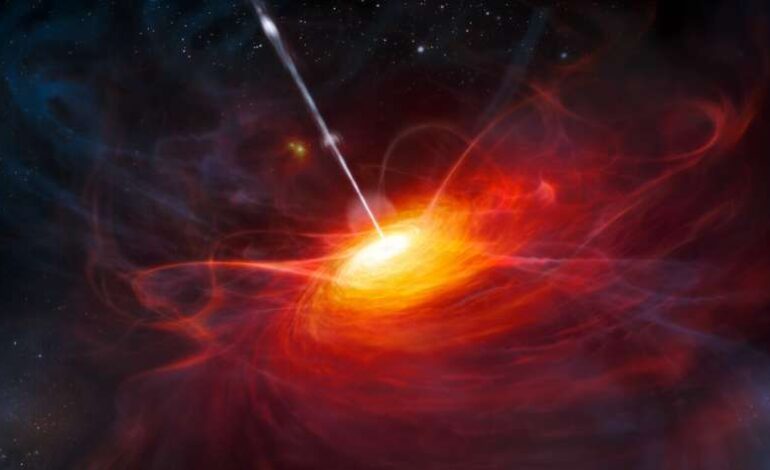Astronomers Uncover Most X-ray Luminous Quasar ID830

An international team of astronomers has identified the quasar known as ID830 as the most X-ray luminous radio-loud quasar observed to date. The findings were published on November 7, 2025, on the pre-print server arXiv, following extensive observations utilizing the Spektr-RG spacecraft and various ground-based telescopes.
Quasars, or quasi-stellar objects, are active galactic nuclei powered by supermassive black holes (SMBHs). They emit vast amounts of electromagnetic radiation across numerous wavelengths, including radio, infrared, visible, ultraviolet, and X-ray. The newly studied quasar, ID830, located at a redshift of 3.43, exhibits a remarkable bolometric luminosity of approximately one quindecillion erg/s. This measurement suggests that it either harbors an exceptionally massive SMBH near the upper limit of 10 billion solar masses or is undergoing a super-Eddington accretion phase.
Leading the research, Sakiko Obuchi from Waseda University in Tokyo, Japan, and her team conducted a comprehensive multiwavelength study. They utilized data from the eROSITA X-ray telescope, SDSS, and Subaru/MOIRCS, along with radio data from several facilities, including LOFAR, GMRT, FIRST, ASKAP, and VLASS.
The investigation revealed that ID830 features an X-ray luminosity reaching 0.01 quindecillion erg/s, making it one of the highest detected for radio-loud quasars. Its bolometric luminosity was measured at 0.076 quindecillion erg/s, which results in an Eddington ratio of 1.4, confirming the occurrence of super-Eddington accretion.
The researchers noted a moderate reddening of about 0.39 mag for ID830, with an estimated mass of the supermassive black hole at around 440 million solar masses. Furthermore, the quasar displayed a high ultraviolet-to-X-ray luminosity ratio of -1.2, which is notably higher than that of other quasars and early active galactic nuclei known as little red dots (LRDs).
The study also assessed the estimated jet kinetic power of ID830, which ranges between 1–10 quattuordecillion erg/s. This finding indicates that the mechanical energy from the jet can efficiently interact with the host’s interstellar medium, suggesting a significant connection between the quasar’s emissions and its environment.
Transitional Phase of Quasar Evolution
The authors concluded that ID830 may be in a transitional phase, where the corona and jet are simultaneously energized following an accretion burst. They suggest that this quasar could represent a post-burst super-Eddington phenomenon, bridging the gap between sub-Eddington quasars and the recently identified X-ray weak LRDs observed with the James Webb Space Telescope.
By providing new insights into the nature of such extreme quasars, this research enhances our understanding of the complex processes occurring in the universe’s most energetic environments. The findings underscore the potential of advanced observational technologies in unveiling the mysteries of cosmic phenomena.






